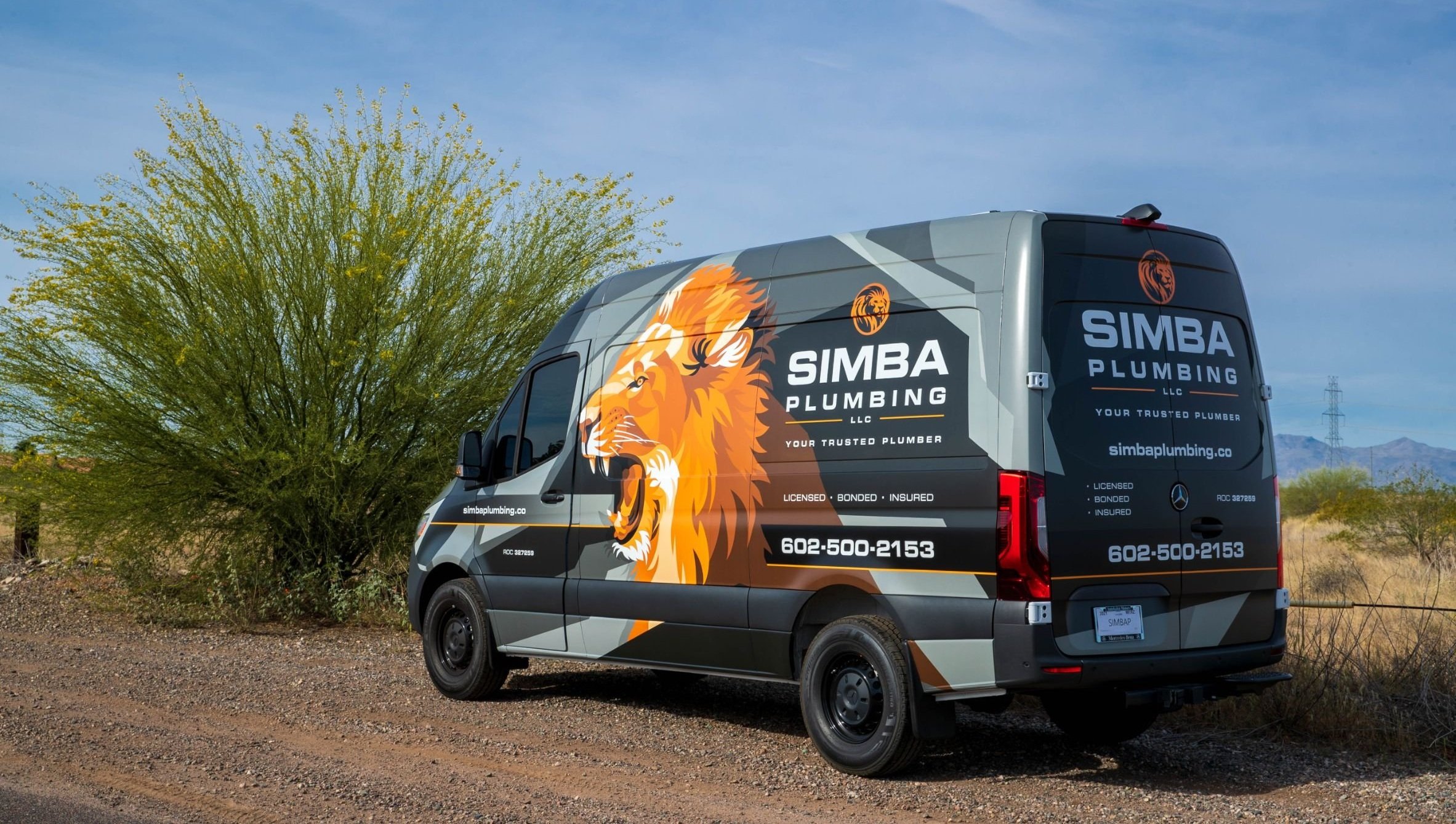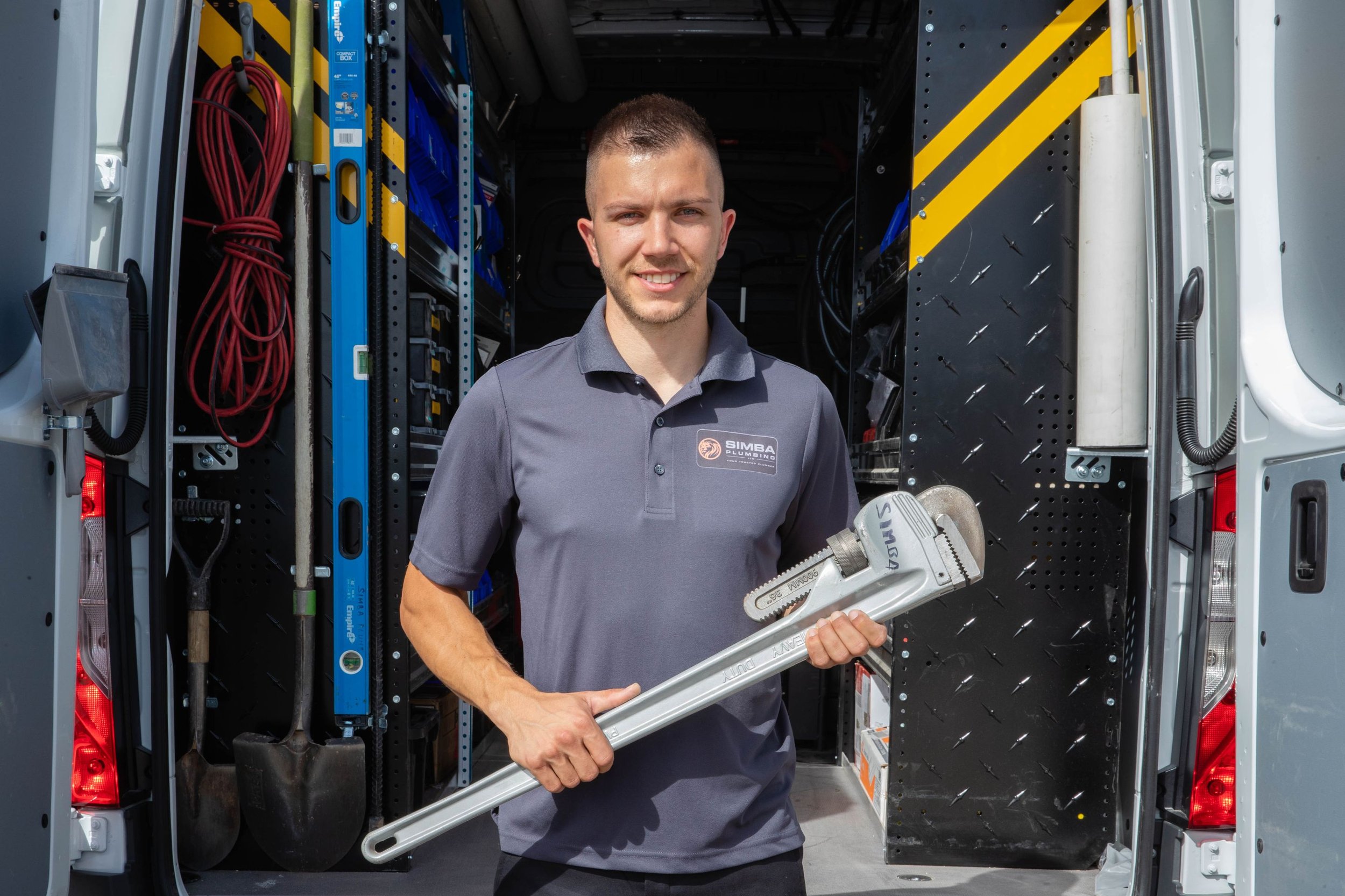
Affordable Sump Pump Installation & Repair in Phoenix and Surrounding Areas
Sump pumps are an effective and efficient safety measure against household flooding. This machine protects a home from rising water and heavy rain that can leave homeowners with costly repairs, structural damage, and stress. The sump pump mechanism moves water from the basement and lower spaces away from the house. It’s a hole or pit beneath the floor, also known as a basin. The sump pump is installed in the basin, equipped with valves to sense rising water levels and water pressure changes.
When the water levels become too high, the pump pulls excess water through a discharge line. The discharge line serves to connect the pump to its designated drainage space.
There’s no better way to prevent water damage than installing a sump pump in a house. The basement is often the preferred place for storing the pump because it’s the lowest part of the home, most prone to flooding.
Other than preventing home flooding, sump pumps also:
Protect the household from sewage backups
Keep the mold and mildew away
Increase property value
Minimize heating costs
Prevents pest infestations
Lowers humidity levels inside a home
Residents in Phoenix and the surrounding areas needing sump pump installation and repair services can rely on Simba Plumbing. Our licensed technicians have years of experience and advanced skill sets required for a reliable, long-lasting, and highly effective sump pump installation.
Sump Pump Installation in Phoenix
Simba Plumbing is the most trusted plumbing company for sump pump installations. 24/7 service, affordable pricing, and advanced setup techniques make our company stand out from the competition.
Homeowners from the area who need sump pump installation service can choose between a variety of sump pump types:
Pedestal Pumps
Pedestal sump pumps have motors next to the sump basin. Narrow and deep sump pits are better for this type of pump. However, it gives off more noise, which doesn’t make them an ideal solution for homeowners who have living spaces in their basement.
Submersible Pumps
Submersible sump pumps have the motor and housing inside the hole. These solutions are quieter and more substantial, making them better for people who spend more time in the basement or need a better-performing pump.
Homeowners who don’t know which type of sump pump is better suited for their needs can rely on Simba Plumbing expert’s advice. Our technicians can visit the area and recommend the best solution to maximize the homeowner’s investment and ensure a comfortable and long-lasting service without interruptions.

Areas we serve
Phoenix, Sun City West, Mesa, Chandler, Gilbert, Glendale, Scottsdale, Peoria, Tempe, Surprise, Goodyear, Avondale, Queen Creek, El Mirage, Fountain Hills, Paradise Valley, Tolleson, Youngtown, Litchfield Park, Cave Creek, Carefree, Sun Lakes, and Waddell
OUR REVIEWS
Our goal is to provide the best service and customer experience.
Our Sump Pump Installation Process
-
Consultation and Home Assessment
The installation begins with thoroughly evaluating the property's specific drainage needs. Our experienced technicians examine basement conditions, water table levels, and drainage patterns. This detailed assessment includes measuring the space, identifying optimal pump locations, and analyzing soil conditions. We carefully consider these factors and develop a customized installation plan that addresses unique property requirements. The evaluation phase also includes reviewing local building codes and permit requirements to maintain full compliance throughout the project.
-
Choosing the Right Sump Pump
Appropriate equipment selection depends on multiple factors identified during the initial assessment. Our specialists evaluate water volume requirements, discharge distance, and backup power needs. The selection process considers submersible and pedestal pump options, comparing their advantages for specific applications. Professional guidance focuses on matching pump capacity with anticipated water loads while considering long-term reliability. This careful selection process incorporates horsepower requirements, basin size compatibility, and energy efficiency ratings.
-
Site Preparation and Installation Location
Proper preparation creates the foundation for reliable sump pump operation. Our team carefully marks utility lines and establishes clear work zones before excavating. The preparation process includes protecting surrounding areas and setting up necessary safety equipment. Professional site planning considers access requirements for maintenance and potential future upgrades. This thorough approach to site preparation streamlines the installation process while protecting property features.
-
Installation of Sump Pump Basin
The basin installation phase requires precise excavation and positioning. Our technicians create properly sized pits with appropriate depth and width specifications. Professional installation includes adding necessary gravel beds and preparing drainage channels. The basin positioning process accounts for proper leveling and stability requirements. This critical phase establishes the framework for effective water collection and pump operation throughout the system's lifespan.
-
Electrical Connections
Professional wiring installation follows strict safety protocols and electrical codes. Our licensed electricians establish dedicated circuits with appropriate amp ratings for pump operation. The electrical installation includes proper grounding and weatherproof connections. Installing backup power systems and alarm mechanisms adds essential redundancy to the system. This comprehensive approach to electrical work creates reliable power delivery for consistent pump operation.
-
System Testing and Final Adjustments
Comprehensive testing validates proper system operation under various conditions. Our technicians verify proper water level sensing, pump activation, and discharge functions. The testing process includes calibrating float switches and confirming appropriate cycle times. Professional evaluation examines discharge flow rates and checks for unusual noise or vibration. These thorough testing procedures demonstrate complete system functionality before project completion.
Sump Pump Repair in Phoenix and Surrounding Areas
Sump pumps require regular maintenance throughout the year to ensure they perform as expected. Homeowners shouldn’t neglect the sump pumps, especially when heavy rainfall is expected.
Early signs a sump pump may need repair include signs of wear and tear, a rusted appearance, loud noises, a constantly running pump, or running at the wrong times. Sump pumps more than seven years old should be checked more often or replaced. If rust appears on the surface, it could be a sign of bacteria that releases a gel that can clog the pump and the rest of the plumbing system.
Homeowners who hear excessive noises coming from the pump are most likely dealing with worn or damaged parts that need replacing. Another reason can be a failed motor or a jammed impeller. Finally, a pump that always seems to be running typically has an issue with the switch. When the on or off switch stops working, it can result in the pump not turning off or on properly.
There are plenty of reasons a sump pump may need repair. If the sump pump is not working as designed, homeowners should contact professional technicians instead.
Common Sump Pump Problems We Fix
-
Our technicians conduct comprehensive diagnostic procedures to identify the root cause when a sump pump fails to activate. Common issues include float switch malfunctions, power supply problems, or motor failures. Our experienced team examines electrical connections, tests control mechanisms, and evaluates mechanical components. Professional diagnosis often reveals simple solutions like switch adjustments or complex component replacement issues. Swift identification of the specific problem allows our team to implement effective repairs and restore proper pump operation.
-
Continuous pump operation indicates underlying system issues requiring professional attention. Our specialists examine float switch positions, check valve functionality, and evaluate basin water levels. The diagnostic process includes testing automatic shutoff mechanisms and verifying proper cycle timing. Professional evaluation considers factors such as pump capacity and drainage patterns. This comprehensive approach identifies whether the issue stems from mechanical problems or improper system sizing.
-
Discharge pipe blockages threaten pump system functionality. Our crew utilizes specialized equipment to locate and clear obstructions throughout the discharge line. Professional cleaning procedures address both internal buildup and external blockage sources. The clearing process includes inspecting check valves and pipe joints for additional restrictions. This thorough approach restores proper water flow and prevents future blockage-related issues.
-
Overheating conditions demand immediate attention to prevent permanent pump damage. Our technicians investigate causes such as excessive cycling, inadequate water levels, or mechanical friction. Professional diagnosis includes thermal imaging and amperage testing to identify heat sources. The evaluation process examines pump ventilation and cooling systems for proper operation. This detailed analysis leads to targeted solutions that address specific causes of overheating.
-
Abnormal operating sounds often signal the development of mechanical problems. Our experienced technicians listen for specific noise patterns that indicate bearing wear, impeller damage, or mounting issues. Professional evaluation includes vibration analysis and component inspection to locate problem sources. The diagnostic process examines pump alignment and support structure integrity. This careful attention to mechanical symptoms helps prevent more serious system failures.
-
Insufficient water removal capacity can cause property flooding. Our team evaluates pump specifications against actual performance measurements. Professional testing includes flow rate analysis and discharge capacity verification. The assessment examines pump sizing, impeller condition, and system head pressure. This detailed evaluation determines whether repairs or system upgrades best resolve capacity issues.
Causes of Sump Pump Damage
-
Electrical supply interruptions pose significant risks to sump pump operation. Our team addresses both immediate power loss issues and long-term electrical reliability concerns. Professional solutions include backup power systems and automatic transfer switches. The protection strategy incorporates battery backup options and generator connectivity where appropriate. This comprehensive approach maintains pump operation during various types of power disruptions.
-
Excessive operational demands strain pump systems beyond their design capabilities. Our technicians analyze water inflow rates and compare them to pump capacity specifications. Professional evaluation includes duty cycle monitoring and load analysis. The assessment process examines factors contributing to system overload conditions. This detailed understanding guides appropriate solutions for maintaining proper pump operation.
-
Regular maintenance prevents common pump failures and extends system life. Our preventive service program includes comprehensive component inspection and cleaning procedures. Professional maintenance addresses mechanical wear, electrical connections, and control system operation. The service process incorporates systematic checking of all critical pump functions. This proactive approach identifies possible issues before they develop into serious problems.
-
Improper initial installation creates ongoing operational problems. Our team recognizes installation errors through systematic evaluation of system components. Professional assessment examines pump positioning, pipe routing, and electrical connections. The review process includes verification of compliance with manufacturer specifications and local codes. This thorough evaluation guides appropriate corrective measures for installation-related issues.
-
Component wear and mechanical breakdowns require skilled diagnostic approaches. Our technicians utilize advanced testing equipment to identify specific failure points. Professional evaluation includes detailed inspection of bearings, seals, and moving parts. The diagnostic process examines both evident and subtle signs of mechanical deterioration. This comprehensive assessment leads to targeted repairs that address the root causes of mechanical failures.
Choose Simba Plumbing for Sump Pump Installation and Repair in Phoenix
Phoenix area residents can contact Simba Plumbing for any sump pump installation or repair services.
Our 24/7 emergency service, skilled professionals, and affordable pricing make us a preferred plumbing service provider.
FAQs
-
A sump pump is a device used to take out water that accumulates in a sump basin, often located in basements or crawl spaces. In Phoenix, sump pumps help prevent flooding during heavy rains, protecting your home from water damage.
-
Signs that your sump pump needs attention include unusual noises, frequent cycling, an inability to pump water, or standing water around it. If it's over 10 years old or constantly malfunctioning, replacement may be necessary.
-
A sump pump shields your home from water damage, prevents mold growth, improves indoor air quality, and helps preserve the foundation by keeping water out of basements or crawl spaces.
-
Sump pump installation typically takes 4-6 hours, depending on the complexity of the job, the pump's location, and the existing plumbing setup.
-
Yes, a sump pump is beneficial in Phoenix because it can handle water during monsoon season, flash floods, or plumbing issues that may lead to water accumulation.
-
The cost of installing a sump pump is normally between $400 to $2,000, depending on the type of pump, installation complexity, and whether additional plumbing work is required.
-
There are mostly two types: submersible sump pumps (installed below water level and quieter) and pedestal sump pumps (mounted above the water level, typically easier to service).
-
It's recommended that your sump pump be inspected and tested annually to ensure it's working correctly. Routine maintenance will help extend its lifespan and improve its efficiency.
-
While some people can do DIY installation, it is recommended that they hire a professional plumber like Simba Plumbing for correct installation, as incorrect setup can cause malfunctions or damage to their property.
-
If your sump pump doesn't work during heavy rainfall or a storm, water may accumulate, leading to flooding. Regular maintenance, backups, and battery-powered sump pumps can help mitigate this risk.
-
A backup sump pump is favorably recommended, especially if your primary pump fails during a storm. Battery-operated backups can provide an extra layer of protection, ensuring continued drainage during power outages.
-
Power outages clogged or frozen discharge pipes, and a lack of maintenance are common causes of sump pump failure. Regular checks and repairs help prevent most failures.
-
If your sump pump is making strange noises, such as grinding, buzzing, or rattling, it may indicate debris inside or worn-out parts. Contact Simba Plumbing to diagnose and repair the issue.
-
Yes, sump pumps are commonly installed in crawl spaces or basements. They help keep the area dry by taking out any water that gathers in the sump basin.
-
Test your sump pump by putting water into the sump pit and ensuring the pump activates and drains the water. If the pump fails to turn on or doesn't drain water effectively, it may need repair or replacement.


